Great Design Plant: Pale Indian Plantain Stands Tall and Proud
http://decor-ideas.org 09/03/2014 19:14 Decor Ideas
Pale Indian plantain is the most asked about plant in my Minnesota landscape whenever I host an open house. Visitors are enthralled with its size, large flower heads, pale purple flower stalks, blue-gray leaves and overall presence in the landscape. There are few other plants that could compete with its combination of traits.
Pale Indian plantain grows in prairies and on rocky woodland edges in the eastern United States, although it is by no means a dominant plant in these plant communities. You can also get both seeds and plants from several native plant growers within its native range.
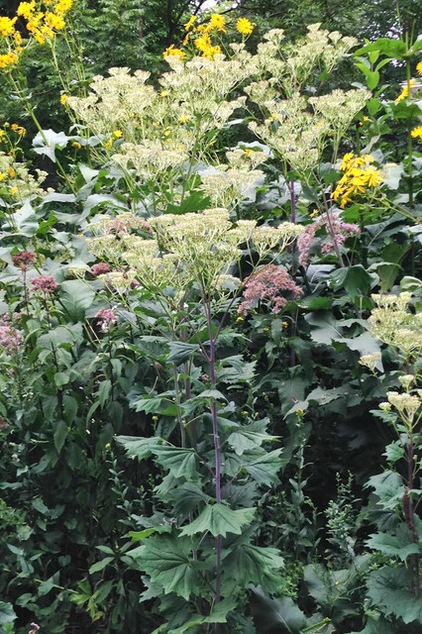
Botanical name: Arnoglossum atriplicifolium (formerly Cacalia atriplicifolia)
Common name: Pale Indian plantain
Origin: Native to the eastern United States, from Minnesota south to Louisiana; westward, including Nebraska, Kansas and Oklahoma; eastward to New York; and south to Florida
Where it will grow: Hardy to -25 degrees Fahrenheit (USDA zones 4b to 9b; find your zone)
Typical plant communities: Prairies, woodland edges, savannas and sand dunes
Water requirement: Medium to dry, well-drained soil; sand to clay-loam
Light requirement: Full to partial sun
Mature size: 4 to 9 feet tall and 18 to 30 inches wide
Benefits and tolerances: High tolerance for drought
Seasonal interest: Flowers from July until September
When to plant: Spring or fall
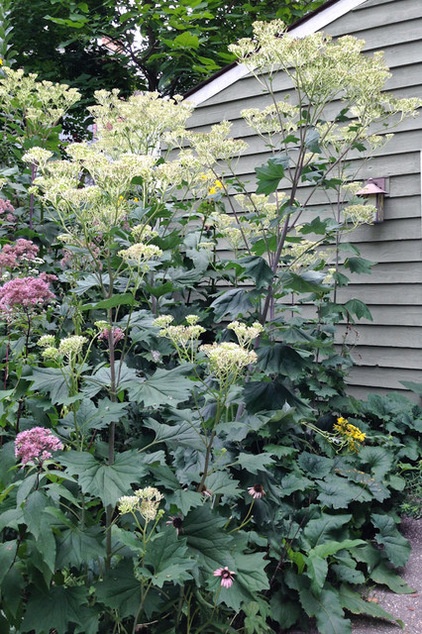
Distinguishing traits. This plant’s size is the most obvious distinguishing trait. Tall flower stalks can ascend to 9 feet.
The large, blue-gray leaves are attractive in their own right and contrast with the light purple flower stalks. The large, broad, umbel flower head can be close to 24 inches wide on mature plants, with clusters of many white- to cream-colored flowers. The flowering period can last for two months, as flowers on each portion of the umbel develop in succession.
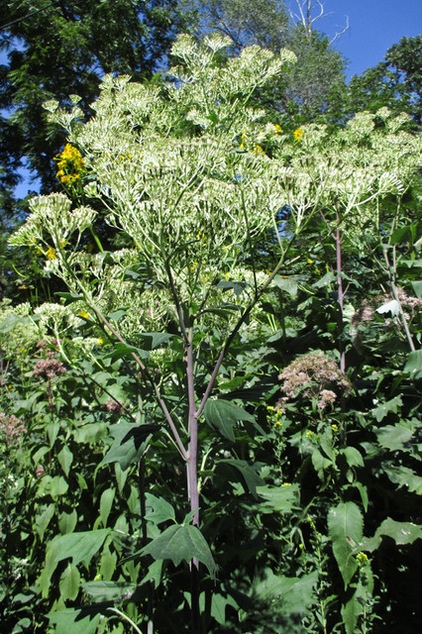
How to use it. With its large size, pale Indian plantain is best used in perennial borders, where it can provide a backdrop to shorter plants. The large, hollow flower stalks make this plant extra stable and sturdy; it rarely flops over unless it is subjected to a large windstorm or the soil becomes so saturated that it uproots.
It also works well in large prairie plantings or restorations, where its size allows it to blend in with other tall prairie plants.
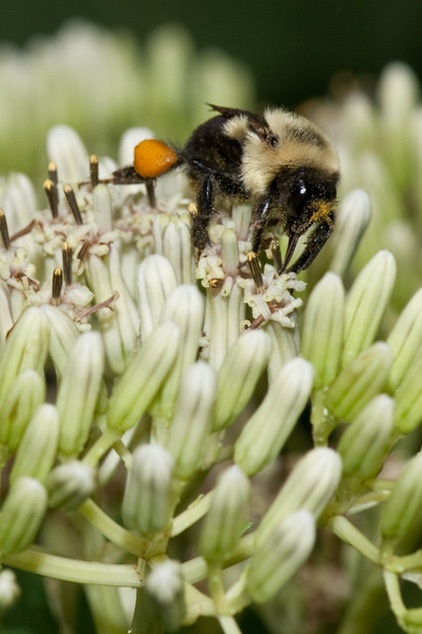
The round, hollow plant stems make excellent cavity-nesting tubes for solitary bees (and wasps). Cut the stems in 8- to 10-inch lengths and use twine to form 4-inch bundles. Hang the bundles from a structure, such as a pergola or fence, in your garden in early spring. Replace the stems every two years by disassembling the bundles and placing the old stems propped up off the ground, so any remaining bees can emerge from the stems during the summer.
Shown: A female worker bumblebee visiting the flowers for nectar
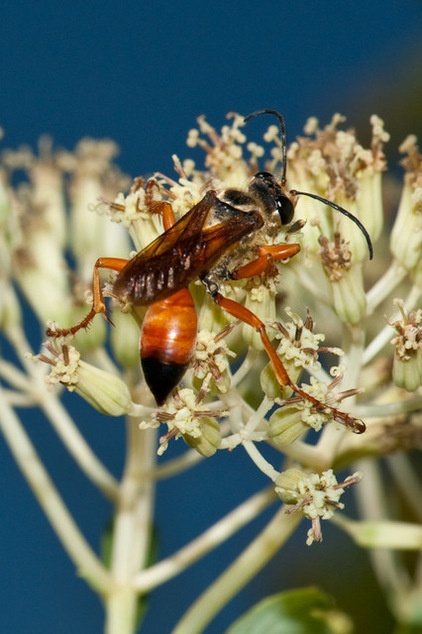
Planting notes. Pale Indian plantain thrives in most soil types, from dry, rocky gravel to heavier clay-loam soil.
The seeds are wind dispersed, and if bare soil exists, seedlings will readily develop. If seedings are unwanted, the flower heads can be cut back and the seeds collected before they are wind dispersed in late fall. The first-year seedlings are large, basal rosettes. It typically develops flower stalks by the second or third year.
The rosettes have fibrous roots and are easy to transplant or relocate if they develop in an undesired location. Larger plants, due to their size, are more difficult to dig up and transplant.
Shown: A great golden digger wasp (Sphex ichneumoneus), a common visitor to the flowers
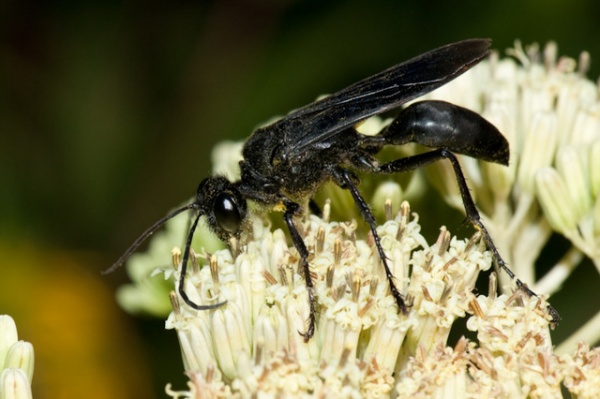
Pollinator notes. Pale Indian plantain flowers are not self-compatible and therefore require cross-pollination by pollinators.
Large, solitary wasps are frequent visitors; the cream-colored flowers and easily accessible nectar are two traits that make this plant attractive to wasps. These wasps are beneficial insects to attract to our landscapes. They hunt crickets, katydids, caterpillars, sawfly larvae and other insect prey and help to keep problem insect populations in balance.
Bumblebees and smaller wild bees are less frequent visitors.
Shown: A great black wasp (Sphex pensylvanicus)
More:
Houzz guides to gardening with native plants
How to Help Your Town’s Beneficial Birds and Bugs
Related Articles Recommended












